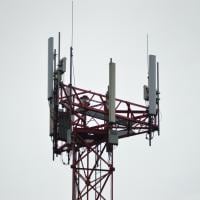The 5 Biggest Challenges Facing the IoT Today

The internet of things was first conceptualized in 1982. Its humble beginnings were that of a vending machine, connected to a network that would relay information about its content for stock purposes. The first recorded use of the term was three years later.
So, it’s been on the cards for a while. It’s the key mechanism that would enable the sci-fi future that we dreamed of as children.
The future of home automation and enterprise digital transformation is well and truly upon us, as most homes and companies now have at least a few devices connected to the IoT, and some facilities’ infrastructure completely based within it.
We’ve truly embraced the IoT as a society. Edge devices are providing excellent ways to organize a work space and a home.
However, the IoT’s rapid growth and prevalence has brought with it a host of unique challenges that have to be addressed as we continue to integrate it into our personal and professional lives.
So, let’s look at some of those challenges, why they exist, and possible solutions to them.
1 - Privacy and Security
Cybersecurity is always a concern for any network technology, but the IoT represents a unique security challenge for a few reasons:
First, it has an enormous attack surface, meaning the number of entry points through which hackers can gain access to the network.
The attack surface is a huge factor because edge devices travel between multiple networks shared with other devices, meaning a hacker need only breach one device to gain access to others on the same network. Because of this, it can be difficult to detect vulnerabilities, even with numerous production testing from the beginning.
The real-world implications of this are unsettling, as we depend on edge devices for many important things in our day to day lives. Think of autonomous vehicles, security systems, or even baby monitors.
A security breach in any of these could have dire consequences. Especially now, since so many of us are working from home, there could be hundreds of home and work devices all linked via team task management software.
Secondly, because many IoT devices are autonomous, contemporary malware prevention technologies struggle to find active security breaches, meaning we’re slow to react when a system is compromised.
The best way to protect against security breaches is to assume that networks can, and will, be compromised by other devices. With this assumption, the best option for networks is to build in more thorough authentication procedures, so that devices can’t be accessed by anybody on the network, as well as implement highly responsive failsafe protocols, should a security breach be detected.
Finally, keeping people well informed about good security practices is always helpful. As a workplace, include safety issues as part of the stand-up meetings, remind staff about any necessary updates or risks, and perform regular password rotations.
2 - Data Service Needs
The exponential increase of the IoT has also led to a huge increase in data usage. This is a predictable outcome, however, the surge in bandwidth intensive applications has accelerated the need for data at a rate that’s difficult to keep up with. Consider how many homes now use streaming services, rather than cable TV.
IoT networks are authenticated and directed through centralized servers, which can struggle to deal with large amounts of network traffic, creating a bottleneck effect that results in slower response times and network lag.
We’ve all experienced buffering frustration, or patchy service, but that’s just the beginning.
For example, with cloud-hosted call centers, a rigorous automation testing process could reveal severe performance issues and poor call center KPIs from these kinds of bottlenecks. Even more seriously, edge devices like security systems, autonomous vehicles, or medical equipment could also be affected.
So, data bottlenecks can have much more serious implications than not being able to watch the latest upload from your favorite YouTube channel. And those implications are going to become more serious as we incorporate more essential devices into the IoT.
With this in mind, what’s the solution to the limited bandwidth problem?
Companies should think hard about the adaptability and resourcefulness of their individual network providers. Many offer clever solutions to this problem.
Some network providers employ intelligent switching between mobile networks, using alternative data networks, should their current one experience higher traffic.
Another solution is to increase the processing capabilities of devices themselves, speeding up the whole process.
Many organizations are utilizing edge data centers; dedicated data centers for local networks of edge devices. This is a great option for rural areas with bad coverage or large organizations that can’t risk reliance on a larger public network. They supply efficient, low cost web hosting where it may, otherwise, be difficult to do so.
3 - Regulation
Technological advancements can happen incredibly quickly. Relevant developments in legislation, on the other hand, don’t. Generally, legislators are often a little behind when it comes to learning about tech. The process of acknowledging problems with tech is slow, methodical, and fraught with red tape.
Legislation regarding IoT networks is no exception.
People know the risks, and the political sector is rousing slightly, calling for more liability on the part of manufacturers. Although, as we mentioned, the legislative process can be slow, and can’t really do much about the devices that are already on the market.
Even if you only use devices with incredibly high security standards, these products often share a network with millions of others. Some may be imported from countries without these standards, or just older models. Their lack of security presents a security risk to every other device on the network.
So, how do you reconcile this issue?
As a company, you should think carefully when choosing developers and products. Only invest in edge devices that consider future legal ramifications. Don’t buy cheap, substandard devices. They may save you money at time of purchase but may become obsolete when regulations shift.
Similarly, when choosing a data center, do your research and seek out a provider that puts an emphasis on compliance and responsible data collection.
4 - Device Compatibility
Industry competition is great. It can drive innovation and give customers multiple choices in the devices they choose, depending on their needs.
This can, however, cause compatibility issues. A single household or business may have several different devices from different manufacturers, all operating on the same network.
This means that IoT networks must be compatible with those different devices. This can be a bit of a nightmare for cloud communication platforms. They will need to incorporate constant monitoring and facilitate patches and updates to ensure every edge device works safely and securely.
Any networks that are not equipped to deal with this will inevitably experience performance issues and security risks.
We all dream of a world where every device is fully compatible, but that still seems a long way away. So, until then, IoT networks should make consumer updates as easy and seamless as possible, as outdated versions of device software may be inefficient, unreliable, or vulnerable to hacks.
5 - Public Perception
All the previous points we’ve mentioned inevitably affect public perception of the IoT. People are naturally wary of things they don’t understand, especially when it comes to autonomous devices.
It’s difficult to dismiss these anxieties, because many are valid, particularly when it concerns devices that contain sensitive personal or professional data.
The only real way to navigate this is with complete transparency. State, in clear language, what data is being collected from customers, how it’s being used, and what will happen in the event of a security breach.
Give users all the information they might need and let them decide for themselves. This is less a preventative measure, as much a case of covering your bases. The alternative, misleading customers, can be a catastrophe if and when any security breaches occur.
It’s not just security concerns causing customers to be wary. Service issues are often cited as a challenge when it comes to customer experience. There are a litany of edge devices that have promised customers they’d be the next big thing, only to crumble and have servers shut down.
We can’t understate the importance of customer expectations. The IoT is already a saturated market, and it’s continuing to grow, meaning customers have plenty of alternatives, should edge devices fail to meet their high expectations.

